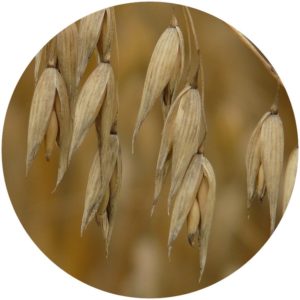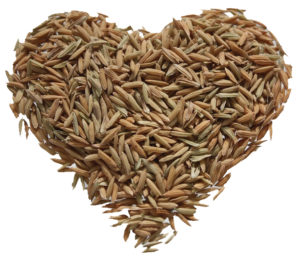Skin & Hair Glossary of ingredients & terms. Defining how to best use hair & skin ingredients. Updated regularly.
A | B | C | D | E | F | G | H | I | J | K | L | M
N | O | P | Q | R | S | T | U | V |W| X | Y | Z
O
-

Oat
Oat Flower
- The oat floret. Oat flower is a skin-soothing hydrator. Oat soothes chronic skin conditions and can offset the potential drying effect of other ingredients within a formulation.
- Oenothera biennis
- Better known as evening primrose seed oil.Evening Primrose Seed Oil restores a glow to the skin. It provides moisture without clogging the skin and is helpful for eczema and acne.
Evening Primrose Seed Oil supports elastin, moisture retention, and skin firmness. [1]
- Oil – Free
- An oil-free product is free of natural and artificial oils. Recommended for those with oily or acne-prone skin.
- Oleic Acid
- A fatty acid better known as Omega-9 acid. It provides long-lasting moisture. See Omegas.
- Oligopeptide 68
- Oligopeptide 68 is a peptide that balances melanin production. This supports the ability to fade discoloration. Oligopeptides are relatively short amino acid chains and absorb well into skin.
-
Olive Oil
- Olive Oil moisturizes but won’t clog pores. It has skin enhancing Omega-3s and polyphenols. Olive Oil makes hair smooth and shiny. Linoleic acid has an anti-inflammatory effect. On hair, it is best used as a hot oil treatment or within a cream formulation which makes it easier to rinse out residue after use.
- Omega-6
- Linoleic acid. One of the major fatty acids. It has anti-inflammatory and hydrating properties. Omega-6 makes skin soft and dewy. [2]
- Omegas
- Omegas maintain ceramides, regulate sebum, and make skin glow. Omegas nourish the hair follicle, maintain scalp health and make the cuticle smooth and the shaft strong. Common Omegas found in food, supplements, and products include Omega-3s, Omega-6s, and Omega-9s.
- Onion Bulb Extract
- Research suggests onion extract can improve the appearance of burns and scars, and reduce pain and itching on dry, damaged skin.
Orange Oil- Orange Oil is an antioxidant that reduces inflammation. It improves collagen production resulting in the reduction of dark spots and wrinkles. The bacteria-fighting and inflammation reduction properties reduce acne without excess skin drying. Orange oil is useful when added to a massage oil or cream blend, especially for post-exercise sore joints.

Both Orange Oil and Orange Peel are antioxidants that are rich in Vitamin C
- Orange Peel
- Orange Peel has more Vitamin C than the fleshly orange fruit, almost double. It fights free radicals, removes blackheads and acne, and reduces wrinkles. Often used in face masks and scrubs.
-

Orchid
Orchid Extract
- Orchids contain mucilage to maintain hydration. When applied to the skin, Orchid mucilage has a high water binding capacity, working as a moisturizer and emollient.[3] Orchids are also an anti-oxidant to fight free radicals [4], increase skin immunity and plump fine lines. Orchid Extracts provide skin hydration. Orchid root cells provide the orchid bloom longevity. This functionality is extracted to provide long-lasting skin hydration and plumping action.
- Organic
- Organic refers to an ingredient that has been grown free of chemical pesticides. Read packaging carefully as organic does not necessarily mean that every ingredient is organic, or that the ingredients are certified organic. To obtain the organic label, “a product must include at least 95 percent organically produced and processed ingredients,” according to the National Organic Program of the USDA. [5] Organic products are gentler on hair and skin because they lack harsh elements or chemicals.
-
Organic Certification
- Certified Organic is when an Organic Certification Body or organization verifies that an ingredient was grown, prepared, processed and packaged without the use of synthetic fertilizers or chemicals.
- Oryza Sativa
- Also known as Rice Bran, Oryza Sativa comes from the outer husk of rice grains. Oryza Sativa has been used in Japan for centuries for hair and skin. It is rich in ceramides, beta-carotene, CoQ10, lycopene, Vitamins A, B, and Tocotrienols, the “super” vitamin E. These hydrate hair and skin to help maintain elasticity. It reduces pigmentation, and diminishes the appearance of fine lines and wrinkles. Oryza Sativa also contains Gamma Oryzanol, a Ferulic Acid ester that is an anti-aging antioxidant that protects the skin from free radical damage.[6]
References
- Muggli, R. (2005), Systemic evening primrose oil improves the biophysical skin parameters of healthy adults. International Journal of Cosmetic Science, 27: 243-249. doi:10.1111/j.1467-2494.2005.00274.x
- Alessandra Cristina Pedro, et al, Qualitative and nutritional comparison of goji berry fruits produced in organic and conventional systems, Scientia Horticulturae, Volume 257, 2019, 108660, ISSN 0304-4238, https://doi.org/10.1016/j.scienta.2019.108660.
- Hadi H, Razali SN, Awadh AI. A Comprehensive Review of the Cosmeceutical Benefits of Vanda Species (Orchidaceae). Nat Prod Commun. 2015 Aug;10(8):1483-8. PMID: 26434147.
- Sut S, Maggi F, Dall’Acqua S. Bioactive Secondary Metabolites from Orchids (Orchidaceae). Chem Biodivers. 2017 Nov;14(11). doi: 10.1002/cbdv.201700172. Epub 2017 Oct 21. PMID: 28771984.
- National Organic Program of the USDA, ams.usda.gov/rules-regulations/organic/labeling
- M Patel and S N Naik*, Gamma-oryzanol from rice bran oil” A review. Journal of Scientific & Industrial Research Vol. 63, July 2004, pp 569-578
